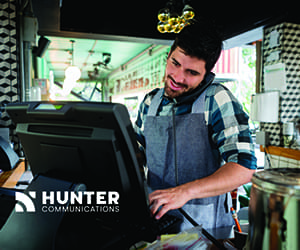Five Pandemic Trends Shaping the Restaurant Industry
Jun 10, 2021 | General
In 2020, when the pandemic forced several businesses to shut down, the restaurant industry was one of the most affected. With more than 110,000 restaurants closed and a 19% decrease in sales, many surviving establishments adjusted their operations to stay afloat. By implementing new technologies and methods of operation, many restaurants found ways to serve their customers even during the pandemic. Now, though the shutdowns are coming to an end and consumers are returning to in-person dining, many of these operational changes adopted during the pandemic are here to stay. In fact, almost three quarters of restaurant operators say they will keep their off-site investments, new technologies, or menu changes.
5 Pandemic Trends That Will Continue To Shape the Restaurant Industry Post-pandemic:
1. Curbside Pickup and Takeout
While many consumers are eating inside restaurants again, many have said they are not quite ready to return to in-person dining. Of those, 82% still plan to order takeout or delivery. Takeout and curbside pickup did not require much additional investment for restaurants but were great ways to continue serving their customers throughout the pandemic. Carryout orders during the shutdowns increased dramatically and are projected to continue trending this way, with 40% of consumers interested in utilizing takeout or delivery post-pandemic.
2. Third-Party Delivery
Like takeout and curbside pickup, delivery orders spiked during the pandemic. Third-party delivery applications were already gaining quite a bit of traction prior to the pandemic, but the shutdowns accelerated their growth. Consumers ordering delivery increased by 20% during the pandemic, and 68% said they are more likely to purchase takeout or delivery now than before the pandemic. With this increase and projected continuation of delivery, third-party applications are here to say.
3. Contactless Payment
With the increase of orders from takeout and delivery, many restaurants have begun using contactless payment including mobile payment options. This enables the streamlined process which, in turn, yields a quality customer experience. Because restaurants have found contactless payments to be efficient and convenient, contactless payments will remain an option, including for in-person dining experiences.
4. Ghost Kitchens
Similar to third-party delivery apps, ghost kitchens had been an emerging trend prior to the pandemic, but the shutdowns rapidly accelerated their popularity and growth. Also known as virtual kitchens, these restaurants are exclusively takeout and/or delivery and don’t have a storefront. Many consumers, however, remain wary of restaurants lacking storefronts. In fact, almost three-quarters say it’s important that they can visit the location from where they order delivery. At the same time, with low overhead costs, ghost kitchens are a great way to bolster revenue. Because full-service restaurants aren’t expected to fully recuperate until 2025, ghost kitchens will probably remain a trend for the next few years.
5. Technology at the Table
With 25% of restaurant operators implementing new technology, many customers can now place contactless orders. As restaurants increasingly use QR code-based menus or order from an app, no phones at the table is becoming a trend of the past. Implementing these technologies has not only enabled restaurants to keep their employees safer from the virus, but restaurant operators have also discovered that it makes their business more efficient. With a more streamlined experience, restaurants maximize both customer experience and revenue.
Restaurant Recovery
Like other industries, restaurants are becoming increasingly tech-centric thanks to the pandemic. But with innovation and digitization come growing pains. Many restaurants lack the necessary infrastructure, like quality phone services and high-speed internet, to support these technologies, and implementing or upgrading these comes with startup costs. Luckily, the restaurant industry, including caterers, bars, and wineries, received $28.6 billion in relief from the 2021 American Rescue Plan. The Restaurant Revitalization Fund provides capital equal to pandemic-related losses up to $10 million per business (no more than $5 million per location). So long as funds are used within the requirements, recipients are not required to repay the funds. Utilities, including internet services, are one of the many allowable uses of these funds.
Hunter Helps Restaurants Recover
At Hunter, we are committed to helping restaurants recover from the pandemic while continuing to bolster their technological advancements. That is why we have introduced the Restaurant Recovery Package . As customers return to in-person dining, our ultra-fast, reliable fiber-optic internet and Wi-Fi will ensure that both the restaurant and its customers have a quality connection. And, with the expected continuation of takeout and delivery orders, our phone system will help streamline those ordering processes.

